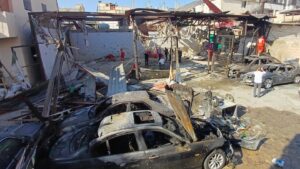
UPDATE: The National Transportation Safety Board (NTSB) has just issued a critical warning regarding bridge safety, following the devastating collapse of the Francis Scott Key Bridge in Baltimore, Maryland. This incident, which resulted in six fatalities, has prompted the NTSB to release 17 urgent safety recommendations aimed at preventing similar tragedies across the nation.
The collapse occurred after the 213 million-pound cargo vessel Dali lost engine and electrical power while leaving port, striking a bridge pillar. In a public meeting held earlier today, NTSB Chairwoman Jennifer Homendy emphasized the importance of implementing these recommendations to enhance safety measures. “In order to see safety change, we need our recommendations implemented,” she stated.
The NTSB’s recommendations include significant measures such as employing thermal imaging to detect loose wires on vessels and ensuring critical pumps operate correctly to prevent automatic shutdowns in emergencies. Other proposals call for improved wire labeling, a warning system for bridge traffic during emergencies, and enhanced data recording systems for ships.
Despite the NTSB’s findings, the Maryland Transportation Authority (MDTA) has stated that the bridge’s collapse was solely due to the actions of the Dali and its operators, asserting that the bridge was compliant with federal regulations. The MDTA maintains that the vessel’s operators are responsible for the tragic incident, which resulted in a settlement of nearly $102 million with the Justice Department earlier this year due to alleged negligence in maintenance.
The investigation revealed that a simple labeling error on a signal wire caused the initial power outage on the Dali, leading to a loss of steering and critical operational capabilities. “Locating a single wire that is loose among thousands of wires is like looking for a loose bolt in the Eiffel Tower,” Homendy commented, highlighting the challenges faced by the crew during the emergency.
The NTSB has also recommended that 68 bridges across 19 states, including iconic structures like the Golden Gate Bridge and several major bridges in New York City, undergo urgent risk assessments to prevent future collapses. Yet, as of today, many of these bridges have not been evaluated for collapse risk in the event of a similar accident.
Looking ahead, the NTSB plans to release a comprehensive report on the Dali incident within weeks, reaffirming its commitment to safety advocacy. “We have a really big voice, and we’re not afraid to use it,” Homendy asserted, stressing the need for voluntary adoption of their safety recommendations.
As the investigation continues, the NTSB’s findings serve as a stark reminder of the vulnerabilities in our infrastructure, urging immediate action to protect lives and prevent future tragedies. Share this urgent update to raise awareness about the critical need for bridge safety reform.





